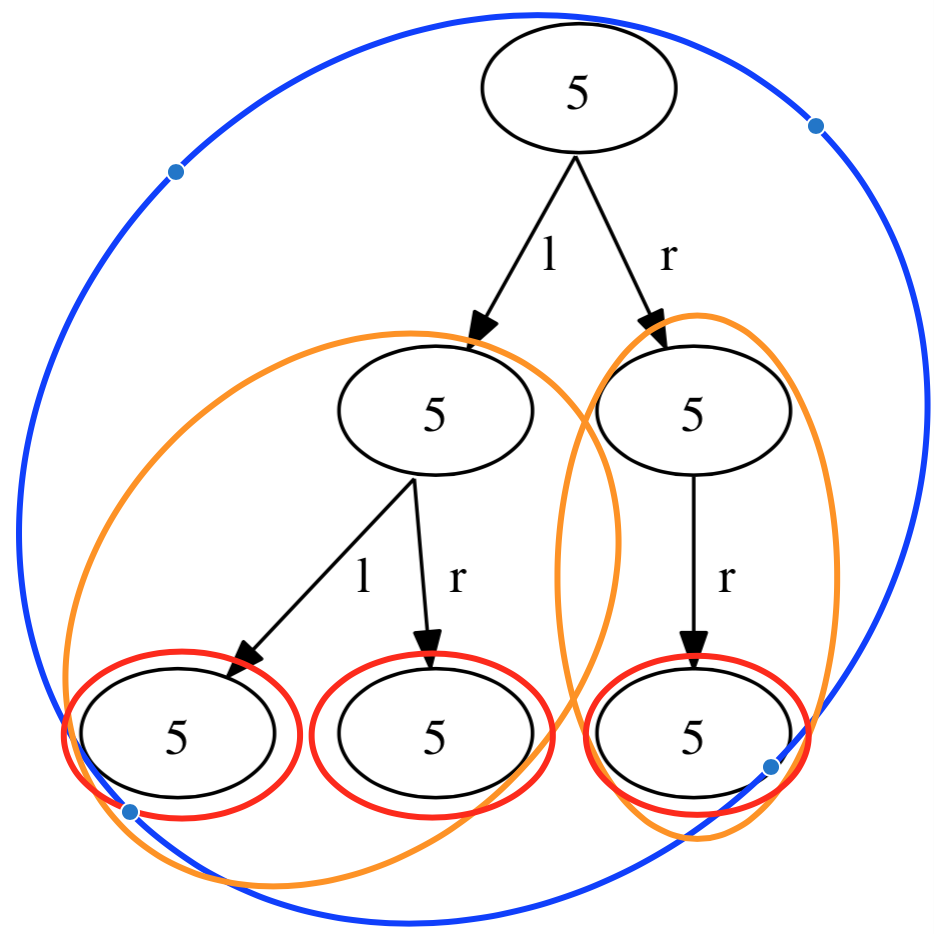November
30th,
2017
blog comments powered by Disqus
Another popular tree question:
Given a binary tree, count the number of unival subtrees(all nodes having the same value). For e.g. in the tree below, all the subtrees enclosed in ellipses are unival trees.

Above tree was generated using the graphviz library. The result for the tree above would be 6. There is a C++ implementation around. The time complexity is O(n).
The ruby implementation looks a lot simpler owing to the fact that it can return multiple values. Here it is:
# let's quickly create a tree
class Node < Struct.new(:val, :left, :right); end
root = Node.new(5)
root.left = Node.new(5)
root.left.left = Node.new(5)
root.left.right = Node.new(5)
root.right = Node.new(5)
root.right.right = Node.new(5)
# this function returns true if:
# a. child is nil
# b. child is not nil and it has same value as parent plus it's subtree is a unival until the child
def is_unival?(node, child, is_child_unival)
is_child_unival && (child.nil? || node.val == child.val)
end
def unival_subtrees(node)
# if node is nil, the subtree count is obviously 0 and it is unival
return [true, 0] if node.nil?
is_left_unival, left_count = unival_subtrees(node.left)
is_right_unival, right_count = unival_subtrees(node.right)
# check is left and right subtrees are unival and the current node and children have same values
if is_unival?(node, node.left, is_left_unival) &&
is_unival?(node, node.right, is_right_unival)
# Add one more subtree which includes current node to the total count
[true, left_count + right_count + 1]
else
[false, left_count + right_count]
end
end
# test by calling the unival_subtrees method
unival_subtrees(root)
=> [true, 6]
This was a fun question to solve. Let me know your thoughts in comments. Cheers!!!